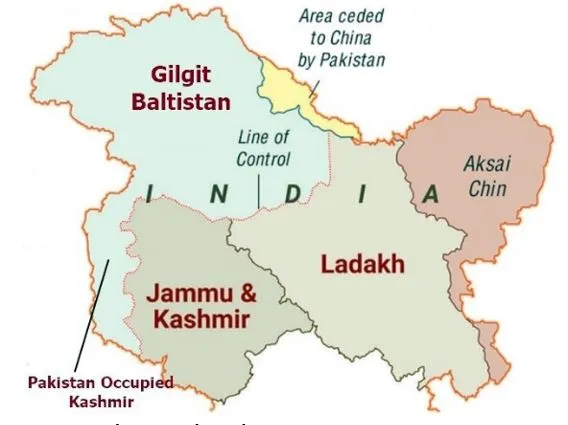

28th April 2025 (15 Topics)
Context
In response to India’s decision to suspend the 1960 Indus Waters Treaty in the aftermath of the Pahalgam terror attack, Pakistan’s government said it could hold the 1972 Simla Agreement and “all other bilateral agreements with India” in abeyance.
What is the Shimla Agreement?
- The Simla Agreement, formally known as the Agreement on Bilateral Relations between India and Pakistan, was signed on July 2, 1972, in Shimla, India, following the 1971 Indo-Pak war and the subsequent Bangladesh Liberation War.
- The agreement was a significant diplomatic effort to normalize relations between the two countries and outline a framework for future bilateral negotiations.
- The agreement was signed by Indira Gandhi, the Prime Minister of India, and Zulfikar Ali Bhutto, the Prime Minister of Pakistan, with the primary goal of establishing peaceful relations and resolving disputes that had plagued Indo-Pakistani relations, especially regarding Jammu and Kashmir.
- Key Terms in the Simla Agreement:
- Restoration of Peaceful Relations: The agreement aimed to restore normal diplomatic and peaceful relations between India and Pakistan after the war of 1971, which had led to the creation of Bangladesh.
- Resolution of Jammu and Kashmir Dispute: Both sides agreed to resolve the dispute bilaterally without third-party intervention.
- Line of Control (LoC): The agreement effectively renamed the existing Ceasefire Line (CFL), established post-1948 after the first war, as the Line of Control (LoC).
- Return of Prisoners of War (POWs): Both countries agreed on the return of prisoners of war captured during the 1971 conflict.
- No War Pact: Both countries agreed not to resort to the use of force for solving future issues and to seek peace through dialogue. This laid the groundwork for various confidence-building measures (CBMs) that would follow.
Line of Control (LoC):
 |

